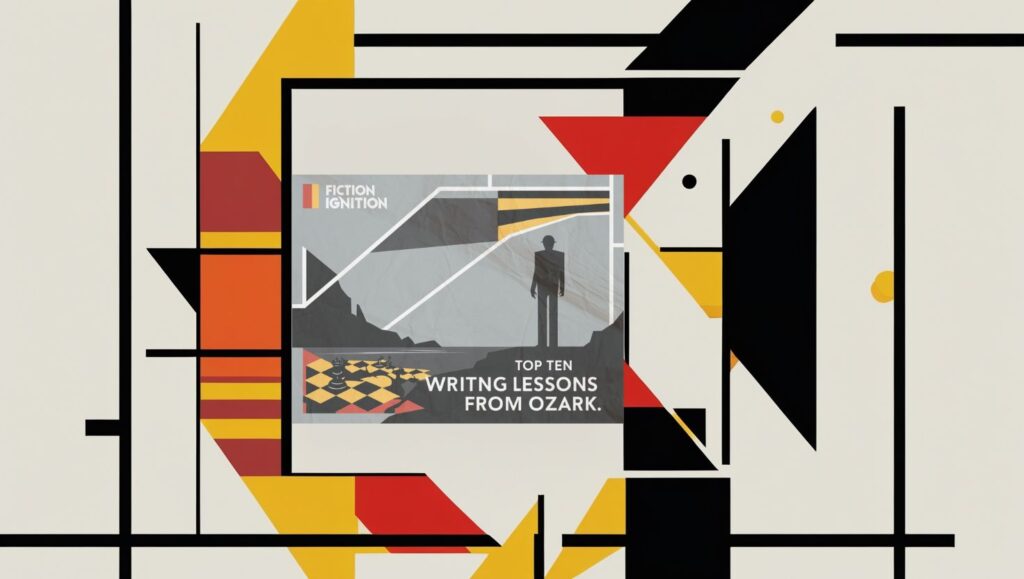Hello, Fiction Igniters! Today, I’m taking you on a whirlwind adventure through the magical world of storytelling with a little help from a plucky Gaul and his eccentric village. That’s right—Asterix and his unforgettable escapades, masterfully written by the great René Goscinny, have taught me some invaluable lessons about writing that I’m dying to share with you. Whether you’re a budding wordsmith or a seasoned scribbler, this is one blog post you don’t want to miss. Let’s dive into our countdown!
10. Start With a Strong Hook
Remember how every Asterix comic opens with that iconic map of Gaul? It’s a perfect blend of setting, context, and humor—hooking you before the story even begins. Your first sentence should do the same: intrigue your readers, set the tone, and make them desperate for more.
Example: Consider the first line of George Orwell’s 1984: “It was a bright cold day in April, and the clocks were striking thirteen.” Weird, right? That’s the kind of hook that pulls readers in.
9. Worldbuilding Should Be Fun
Asterix’s world is rich, quirky, and immersive. From the stubborn Gauls to the hapless Romans, every detail breathes life into the universe.
Actionable Tip: Sprinkle your worldbuilding with humor or unexpected twists. Think of Terry Pratchett’s Discworld series: he didn’t just create a world; he gave it personality.
8. Know Your Cast Inside Out
Asterix is more than just a character—he’s a living, breathing, headstrong little guy who’d take on the Roman Empire with just a fist and a smirk. His best pal Obelix? A loyal, lovable oaf who’d follow him anywhere. Together, they’re unforgettable.
Lesson: Deeply know your characters—their quirks, fears, dreams, and flaws. Harper Lee nailed this with Atticus Finch in To Kill a Mockingbird. Every action of his felt real because she understood him completely.
7. Make Conflict Entertaining
Conflict drives every Asterix adventure, but it’s not just swords clashing. It’s cleverness versus brute force, wits versus bureaucracy, and—let’s not forget—Asterix versus Roman stupidity.
Your Move: Don’t settle for predictable conflicts. Instead, add layers. In Pride and Prejudice, Austen made Elizabeth’s conflict with Darcy both romantic and social, keeping readers hooked.
6. Keep the Pacing Tight
Asterix comics never drag. There’s always a chase, a brawl, or a clever joke to keep things moving. That’s storytelling gold.
Takeaway: Keep your readers turning the pages by balancing action, dialogue, and tension. Think of The Hunger Games: Collins kept Katniss in constant motion, which made it impossible to put the book down.
5. Add Humor—Even in Serious Stories
Asterix isn’t just about battles and daring escapes. It’s the sly humor, the ridiculous wordplay, and the absurd situations that make the stories shine.
Example: Even in J.K. Rowling’s darker Harry Potter books, Fred and George Weasley’s pranks kept the mood from getting too heavy. Humor is a pressure release for both characters and readers.
4. Themes Matter, But Keep Them Subtle
Asterix stories often reflect themes of unity, resistance, and loyalty, but they’re never preachy. Instead, the themes emerge naturally through the story.
Pro Tip: Let your themes unfold through character actions and plot. Think of The Great Gatsby’s critique of the American Dream. Fitzgerald didn’t spell it out; he wove it into the narrative.
3. Language Is Your Secret Weapon
Asterix’s puns and wordplay are legendary. Names like Vitalstatistix and Getafix still make me chuckle.
Your Challenge: Play with language! Use it to reveal character, create mood, or add humor. Dickens did this beautifully with names like Mr. Bumble and Ebenezer Scrooge.
2. Don’t Be Afraid of Satire
Goscinny and Uderzo weren’t shy about poking fun at politics, culture, or even their own characters. The satire gave Asterix an edge and kept adults laughing alongside kids.
Example: Jonathan Swift’s Gulliver’s Travels lampooned human nature and politics while still telling a gripping story. Satire adds layers of meaning to your work.
1. Make It Timeless
Here’s the big one, Fiction Igniters: Asterix has endured for decades because it’s universal. Friendship, courage, and cleverness never go out of style.
How to Apply It: Write stories that speak to fundamental truths about humanity. Look at The Lord of the Rings: Tolkien’s themes of hope and resilience resonate just as much today as they did when he wrote it.
And there you have it, Fiction Igniters—ten powerhouse lessons from everyone’s favorite Gaul. Whether it’s crafting unforgettable characters, mastering humor, or creating worlds that leap off the page, Asterix shows us that great storytelling is as much about heart as it is about craft. Now, go forth and conquer your next writing session!
So, remember, until next time: don’t write, ignite!









